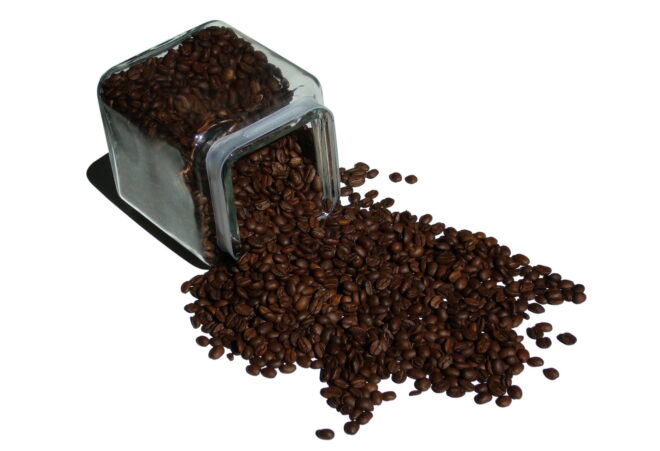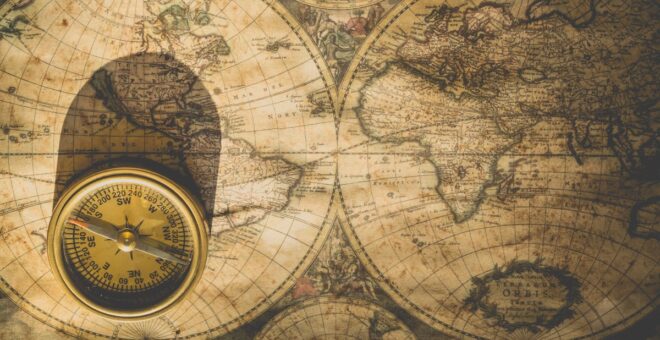 A release candidate (RC1) of the Zmanim API 1.1 is now available on the download page. Changes in this release include a slight clean up of the recently released NOAACalculator code (does not change calculated times), as well as fixes to the date (but not time) of calculations for locations near the arctic circle. This date fix builds on the February release of the API to fix an arctic circle issue and a similar issue encountered when trying to generate zmanim for locations other than the local timezone. Also included in this release is the zmanimAstronomical-1.1.jar, a release that only includes the AstronomicalCalendar class and supporting classes. There was also some code refactoring to make the code easier to maintain. A detailed post will follow (hopefully within the next week or so).
A release candidate (RC1) of the Zmanim API 1.1 is now available on the download page. Changes in this release include a slight clean up of the recently released NOAACalculator code (does not change calculated times), as well as fixes to the date (but not time) of calculations for locations near the arctic circle. This date fix builds on the February release of the API to fix an arctic circle issue and a similar issue encountered when trying to generate zmanim for locations other than the local timezone. Also included in this release is the zmanimAstronomical-1.1.jar, a release that only includes the AstronomicalCalendar class and supporting classes. There was also some code refactoring to make the code easier to maintain. A detailed post will follow (hopefully within the next week or so).
Category: Software Dev
Fix to NOAA Sunrise/Sunset Algorithm
 The Zmanim API was developed from the ground up as an API which allows for easy plugging in of different algorithms. The Zmanim API ships with 3 “Calculator” implementations. Two calculators implement the US Naval Observatory’s algorithm, the SunTimesCalculator and the
The Zmanim API was developed from the ground up as an API which allows for easy plugging in of different algorithms. The Zmanim API ships with 3 “Calculator” implementations. Two calculators implement the US Naval Observatory’s algorithm, the SunTimesCalculator and the ZmanimCalculator (no longer available). Both produce identical zmanim using slightly different code and are included for comparison. There is also the JSuntimeCalculator (no longer available – see below information on the NOAACalculator), an implementation of the NOAA algorithm by Jonathan Stott. I was recently contacted by Eliezer Bulka who wanted to know why sunrise/sunset times generated by the NOAA algorithm were about 2 minutes off of the sunrise/sunset times generated by the NOAA JavaScript implementation that is the source of the JSuntimeCalculator. To compare apples and apples required modification of the NOAA JavaScript to allow entry of decimal latitude/longitude and changing the output to display seconds. No change was made to the algorithm itself. I then ported the JavaScript directly to Java. This involved nothing more than slight syntax changes between the languages. Once this was done, I noticed that the sun rise/set output from the Java port exactly matched the output of the NOAA JavaScript. Analysis of Jonathan’s code showed (or at least my interpretation of it did) that there were two areas that caused the difference. Once is that he used a slightly different method of computing the Julian date, a key part of the algorithm. His change includes the time of day as part of the calculation. The net result of this change is that solar time generated using his algorithm varies based on the time of day the calculation is run, something that is incorrect. This means that there can be a discrepancy of up to one calendar day. If the user calculated sunrise at 11:59 PM, sunrise would be calculated for the following day even if the user attempted to calculate it for today. In addition, the other calculations do not match the output of the matching NOAA code. I have deprecated the JSuntimeCalculator and in its place added the NOAACalculator that was the result of the direct port of the NOAA code, shoehorned into the Zmanim API Calculator interface. I ran some tests to compare the maximum and minimum discrepancy between the 2 implementations, and calculations for Lakewood, NJ, latitude 40.0828, longitude -74.2094 show a discrepancy of between a minute and 34 seconds to a minute and 37 seconds for sunrise and sunset across an entire year of sunrise and sunset calculations. I also compared the USNO algorithm to the new NOAA implementation and ended up with a maximum deviation of less than 30 seconds, something that had been about 1.5 minutes apart previously. While I do believe that the Julian date calculation is a bug, I do not know that this is a case as far as the rest of the calculation, but it is clear that it does not match the NOAA implementation that is was based on, and I recommend that you download the latest version that has the new NOAACalculator that fixes this issue. In addition to this fix, an additional patch will be released later this week that will address issues with calculations in the arctic circle. Stay posted for the next post.
Technical Information about the Bearing to Yerushalayim Map
 I have been asked a number of questions recently about the directional accuracy of the Bearing to Yerushalayim and Zmanim Map calculations. The rhumb line calculations are very straight forward, and I will not spend much time on it in this article. As a side note, for those interested in the subject, I would like to mention that Rabbi Gavriel Goetz recently published a very comprehensive pamphlet Gevuras Moishe on the subject and it is well worth reading.
I have been asked a number of questions recently about the directional accuracy of the Bearing to Yerushalayim and Zmanim Map calculations. The rhumb line calculations are very straight forward, and I will not spend much time on it in this article. As a side note, for those interested in the subject, I would like to mention that Rabbi Gavriel Goetz recently published a very comprehensive pamphlet Gevuras Moishe on the subject and it is well worth reading.
My original calculations and implementation of the great circle route (geodesic line) used simple spherical trigonometry to calculate the initial bearing (and distance) based on a sphere using an authalic mean radius of 6371 km. These calculations were very similar to the method used by Rabbi Yehuda Herskowitz’s article in Yeshurun volume III page 586. This model of the earth is more than accurate enough for these calculations (you would need a very accurate “nose alignment” and the total lack of shuckling to even get within a degree of being correct). Google Maps API, Yahoo Maps and Microsoft’s Live Maps for simplicity sake, all use very similar calculations as mentioned in the cfis blog quoting Morten Nielsen
Google Maps / Virtual Earth / Yahoo Maps(?) all use a spherical datum based on WGS84. That is, it has the same center, orientation and scale as WGS84, but has no flattening. The radius of the sphere is the same as the semi-major axis of WGS84 (6378137 meters).
Using a sphere, all the above-mentioned mapping APIs use spherical law of cosines formula for the calculations, that yield an identical result to the more complex Haversine formula.
Curious how accurate these calculations really are, being based on a perfect sphere and not the oblate ellipsoid/spheroid that the earth actually is, I started looking into the subject a little more. The most accurate current geoid model of the earth is the WGS84 model. The geodesist/mathematician Thaddeus Vincenty published the Vincenty formulae for this type of calculation that is said to be accurate to about one-half millimeter, more than adequate for our calculation. Chris Veness implemented this formula in JavaScript and released it under the LGPL, making it very simple to use. I slightly modified his work to allow easier interaction with the Google Maps API. The implementation that I used when I finally published the map on December 30, 2007, uses the Vincenty formula with the WGS84 geoid model (the Vincenty formula can easily be used with different goeiod models). The table below shows a comparison of the results for the initial bearing and distances of the different calculations based an a Lakewood, NJ (latitude: 40.095965°, longitude: -74.22213°) to Har Habayis (latitude: 31.77805°, longitude: 35.235149°) example.
| Calculation Method | Initial Bearing | Distance |
|---|---|---|
| 6,371 km (authalic mean radius) sphere using spherical trigonometry | 53.86555° | 9224.67442 km |
| Google Maps API 6,378.137km (WGS84 equatorial mean radius) sphere using spherical trigonometry | N/A | 9235.00819 km |
| Vincenty formula using a WGS84 geoid | 53.81786° | 9244.61686 km |
| rhumb line | 95.37152° | 9891.16074 km |
Zmanim Via Instant Messaging Bot
 As hinted at in my previous post , there is a new project underway that uses the Zmanim API in a way that I had never really imagined. Using the Smack API, Michael Kopinsky created the ZmanimBot that allows getting zmanim by instant messaging the ZmanimBot, an internet bot. It currently supports the Google Talk IM system, but support for other systems might follow. Please be aware that the system is under development and is not always up. Additional information can be found on the ZmanimBot page.
As hinted at in my previous post , there is a new project underway that uses the Zmanim API in a way that I had never really imagined. Using the Smack API, Michael Kopinsky created the ZmanimBot that allows getting zmanim by instant messaging the ZmanimBot, an internet bot. It currently supports the Google Talk IM system, but support for other systems might follow. Please be aware that the system is under development and is not always up. Additional information can be found on the ZmanimBot page.
Update (ג׳ אייר תשע״ג April 13, 2008): The ZmanimBot is now available via AIM
Updated Zmanim Jar Released – Please Download the Latest
 In December when developing the Zmanim / Bearing to Yerushalayim map (blog post), I noticed a problem with the code used to generate zmanim. The API returns a Java Date object. Usually only the time is of interest, and the date is ignored, but in some cases (when a timezone offset is specified without using the Olson DB name (such as America/New_York) or if the GMT timezone is used for other locations, and the local standard time is calculated as an offset of GMT), the date of the sunset returned was earlier than the sunrise date. This caused zmanim such as sof zman Shema for some locations to be incorrect, since the math used was comparing sunrise to a sunset on the incorrect date, causing some very odd behavior. Updated files that correct this issue were uploaded to the site on Dec 26th. I was notified today by a developer using the jar, that not all the download links were pointing to the updated versions, and this caused issues for his program (a post about his project will be posted in the near future). All the links have now been updated. Since the old code can sometimes generate incorrect zmanim, it is highly suggested that you replace your current jar with the latest version of zmanim.jar (or zmanim.zip).
In December when developing the Zmanim / Bearing to Yerushalayim map (blog post), I noticed a problem with the code used to generate zmanim. The API returns a Java Date object. Usually only the time is of interest, and the date is ignored, but in some cases (when a timezone offset is specified without using the Olson DB name (such as America/New_York) or if the GMT timezone is used for other locations, and the local standard time is calculated as an offset of GMT), the date of the sunset returned was earlier than the sunrise date. This caused zmanim such as sof zman Shema for some locations to be incorrect, since the math used was comparing sunrise to a sunset on the incorrect date, causing some very odd behavior. Updated files that correct this issue were uploaded to the site on Dec 26th. I was notified today by a developer using the jar, that not all the download links were pointing to the updated versions, and this caused issues for his program (a post about his project will be posted in the near future). All the links have now been updated. Since the old code can sometimes generate incorrect zmanim, it is highly suggested that you replace your current jar with the latest version of zmanim.jar (or zmanim.zip).
Along with the fix mentioned above, a number of other small fixes were done. These include among other minor issues, fixed, better and simplified XML output from the toString method, better error handling for expected error conditions, that had previously caused errors in the generations of zmanim for areas in the arctic circle such as Thule, Greenland. In case you are curious, someone did actually try this, and the error logs lead me to find the issue. The IP address used for the request mapped back to the Thule Air Base.